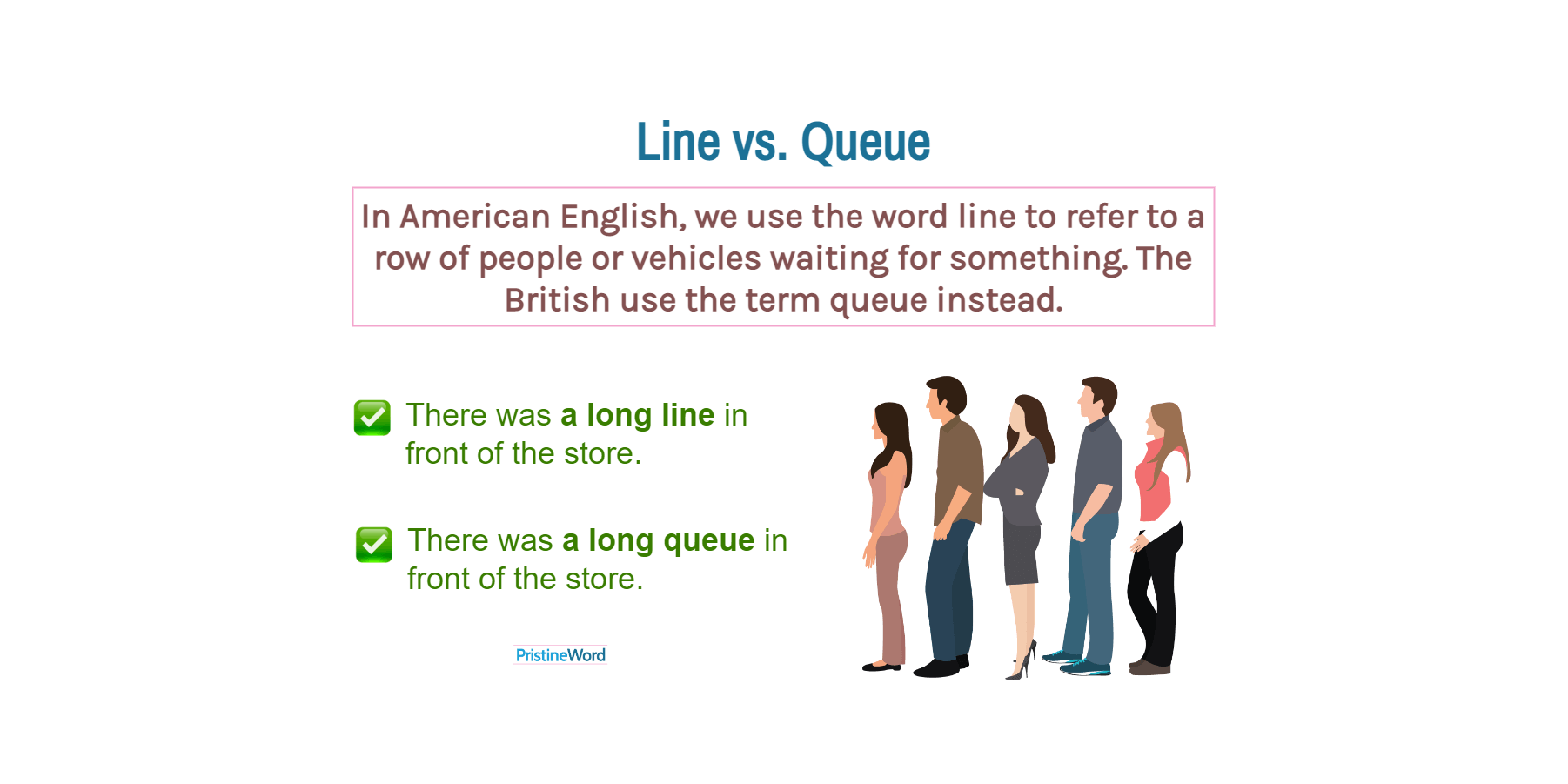In American English, we use the word line to refer to a row of people or vehicles waiting for something. The British use the term queue instead.
In American English, we use the word line to refer to a row of people or vehicles waiting for something. The British use the term queue instead.
There was a long line in front of the store. (American English)
There was a long queue in front of the store. (British English)
When using the verbs be, stand, or wait, Americans omit the article (a/the) before "line" to say:
I had to wait in line for twenty minutes. (American English)
British speakers, by contrast, usually include an article (a/the) in sentences like this:
She stood in a queue for two hours. (British English)
More examples:
Let's wait in line. (American English)
Let's get in the queue. (British English)
When someone goes in front of others waiting, Americans use the expression "cut in line" while the British version of this idiom is "jump the queue".
Don't cut in line! (American English)
Don't jump the queue! (British English)
In American English, "queue" is generally reserved for computer science or technical usage. It can be used to describe a set of jobs waiting to be done by a computer or device. For example, we say "a FIFO queue" (first in, first out) or "a LIFO queue" (last in, first out).

